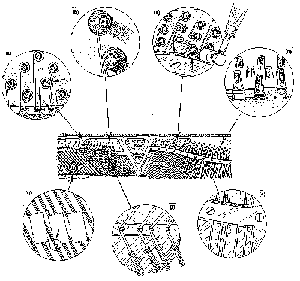Buying Tip: Put the Lid Down
Some dealers make a point of displaying all their grand pianos in cavernous rooms with hardwood floors, and with the lids up, because they know that in such a "live" acoustical environment any piano will sound "grand." A buyer of one of these pianos may be in for a rude awakening when the instrument is delivered to his or her home. You may not be able to change the dealer's showroom acoustics, but you can at least put the lid down, which will probably more closely simulate the way the piano will be played in your home.
... Though still lagging behind the Japanese in quality control, Korean pianos are definitely a good value for the money for most buyers. It would be difficult, however, to describe the tone of a Korean piano, as they have not yet developed an identity or "voice" of their own. As musical machines, they usually work quite well after conscientious dealer prep, but their tone tends to mimic a variety of American, Japanese, and European tonal elements.
RULE OF THUMB: The longer and more extravagant-sounding the warranty, the worse the piano.
... On vertical pianos, all pianists should make sure they can play lightly without the hammers double-striking (hitting the string several times on a single stroke of the key). This is especially a problem for people who have a naturally light touch, such as children, and occurs primarily in the center area of the keyboard of pianos with a Schwander-type action, most of which are of Asian or European origin. Sometimes this problem can be corrected, sometimes not.
... If you read no further in this chapter than just this first paragraph, remember this: the most important thing you should know about buying a used piano is that you should have it inspected by a piano technician before putting your money down.
... Are there many new-looking, untarnished strings on the piano? Some new strings—how nice, right? Wrong. Those new strings were installed to replace ones that broke, so their presence amidst the rusty ones indicates a possible string breakage problem, especially if several are missing too.
... Buyers of used pianos are often scared away from instruments with one or more notes that don't play. Actually, broken or missing action parts are usually among the easiest and cheapest repairs to make. Unless the action is utterly worn out or there has been wholesale destruction of parts, problems in this area of the piano are usually much less cause for alarm than some of the other, less obvious problems previously discussed.
FIGURE 3-13. Some examples of sloppy workmanship and poor scale design. Only a few of these are found in pianos being made today, but most are common in cheaper pianos made from about 1960 to the early 1980s.

Clockwise from top left:
(a) strings bend around neighboring tuning pins, causing tuning problems;
(b) tuning pin holes drilled off-center;
(c) tuning pins too closely spaced or placed too close to the pressure bar so the tuning hammer won't fit over them;
(d) sloppy string coils around tuning pins, or coils at uneven heights above plate, the latter indicating possible pinblock problems;
(e) treble strings poorly spaced or shifting position, resulting in uneven wear to hammers and dampers;
(f) bass strings haphazardly spaced and strung at too great an angle around the upper bearing point (the latter may result in premature breakage);
(g) bass hammers at an angle to bass strings such that the hammers strike the strings of neighboring notes, producing discordant sounds.